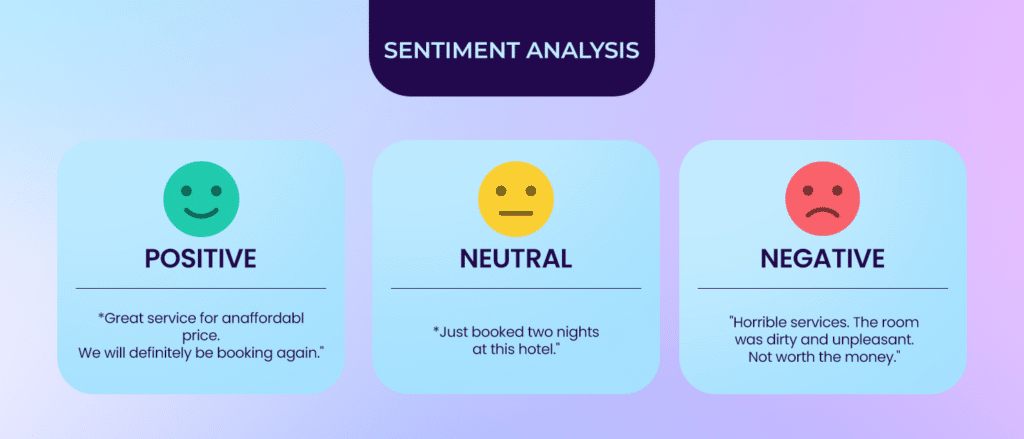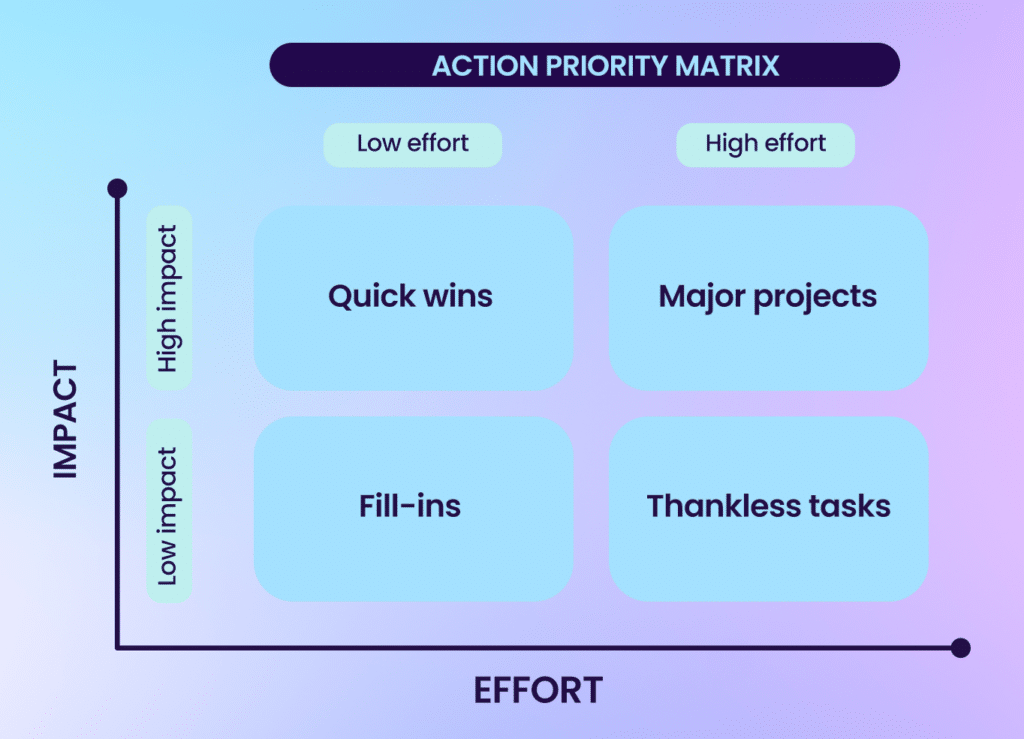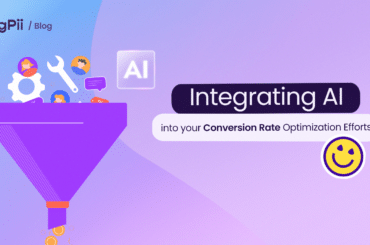Customer feedback is essential for website and conversion rate optimization in the digital age. It provides direct insights into user needs and preferences, guiding improvements that enhance the user experience and boost conversions.
Professionals in website optimization know the value of this feedback. It’s not just about making minor tweaks; it’s about using insights to make strategic changes that align with user expectations and business goals.
This article will explore how to use customer feedback for website enhancements effectively.
It’ll cover strategies for collecting, analyzing, and implementing feedback to improve your website’s performance and user satisfaction.
Understanding the Value of Customer Feedback
Customer feedback is the insights and inputs from website visitors and users about their experience using your site. It’s crucial for website optimization because it directly reveals how users interact with your site, the problems they encounter, and what they value most.
In website optimization, customer feedback goes beyond just collecting compliments. It involves understanding user behavior, pinpointing usability issues, and identifying features that enhance user satisfaction.
Whether collected through feedback forms, surveys, or direct comments, each feedback offers actionable insights. These insights can improve website functionality, design, content, and user journey.
Focusing on customer feedback allows businesses to make informed changes that significantly improve user experience and conversion rates.
It ensures customer satisfaction is at the forefront of website optimization efforts, guiding the site to evolve effectively to meet user needs and expectations.
Benefits of Incorporating Feedback Into Optimization Strategy.
- Improved User Experience (UX): Direct feedback from users can highlight specific areas of your website that are not user-friendly or are confusing. Addressing these issues can significantly enhance the overall user experience.
- Increased Conversion Rates: By understanding and removing barriers to conversion identified through feedback, you can create a smoother user journey, leading to higher conversion rates.
- Enhanced Website Usability: Feedback can pinpoint usability issues that, once resolved, make your website more intuitive and easier to navigate for your visitors.
- Product or Service Improvement: Customer feedback often contains valuable insights into what users like or dislike about your product or service, offering direct pathways to make meaningful improvements.
- Prioritization of Development Resources: Knowing which website elements matter most to your users helps allocate development resources more effectively, ensuring that you’re working on changes that will have the most significant impact.
Collecting Customer Feedback Effectively
Collecting customer feedback is essential for any website looking to improve its user experience and functionality. There are several tools and methods available that make gathering this valuable feedback both efficient and effective:
- Surveys and Polls: These are among the most direct methods to collect feedback. Surveys can be detailed and cover various aspects of the user experience, while polls are great for quick, single-question insights. Tools like Google Forms, FigPii, SurveyMonkey, and Typeform facilitate easy creation and distribution.
- Session Recordings: Tools like Hotjar, FigPii, and Crazy Egg offer session recording features that allow you to see how users interact with your site. This method provides context to the feedback by showing user actions leading up to any reported issues or compliments.
- Heatmaps: Heatmaps give a visual representation of where users click, move, and scroll on your site. They help identify which areas attract the most attention and which are overlooked, offering insights into improving website layout and content placement.
- Feedback Forms: Embedded directly on your website, feedback forms are an accessible way for users to report their experiences as they browse. These forms can be tailored to prompt specific insights or left open-ended for general comments.
Each of these tools and methods offers unique advantages in gathering customer feedback. By combining these approaches, you can comprehensively understand user behavior, preferences, and the challenges they face on your site.
Best practices for encouraging customer participation.
- Offer incentives for participation (e.g., discounts, freebies, or entry into a contest).
- Make the feedback process simple and quick.
- Use personalized requests for feedback.
- Provide multiple channels for feedback (e.g., surveys, social media, email).
- Ensure anonymity and confidentiality.
- Communicate the value and impact of their feedback.
- Follow up with non-responders.
- Leverage timing and context (e.g., after a purchase or service interaction).
Tips on crafting questions that elicit actionable insights.
- Ask Open-Ended Questions: These questions allow respondents to provide more detailed feedback, giving you deeper insights into their thoughts and feelings.
- Be Specific and Clear: Ensure your questions are straightforward and targeted to get the precise information you need.
- Avoid Leading or Biased Questions: Questions should be neutral to ensure the feedback you receive is genuine and not influenced by the question’s wording.
- Use a Mix of Quantitative and Qualitative Questions: Combining numerical data with narrative responses gives a fuller picture of user experiences and preferences.
- Limit the Use of Jargon or Technical Terms: Make sure your questions are understandable to all users, regardless of their technical knowledge.
- Include Scale-Based Questions for Measurable Insights: These questions allow for easy analysis of trends and patterns in user feedback.
- Ask for Examples or Specific Instances: Requesting specifics can clarify the context and details of user experiences, making it easier to address issues.
Analyzing Feedback for Actionable Insights
Once you’ve collected customer feedback, the next crucial step is to analyze this data to uncover actionable insights.
This process involves sorting through the feedback to identify patterns, sentiments, and specific issues that can inform strategic decisions for website improvements.
Techniques for sorting and analyzing feedback data.
Effective analysis transforms raw data into a roadmap for enhancing user experience and website performance. Let’s explore some fundamental techniques used in this process.
- Categorization and Tagging: Organize feedback into categories based on themes, types of feedback, or user demographics. Tagging helps in quickly identifying recurring issues or suggestions.
- Sentiment Analysis: Use automated tools to gauge the emotional tone behind feedback, distinguishing between positive, negative, and neutral sentiments. This can help prioritize areas needing immediate attention.
- Trend Analysis: Look for patterns over time to identify whether specific feedback increases or decreases in frequency. This can indicate the success of recent changes or highlight emerging issues.
- Text Analytics: Employ text analytics tools to extract key themes, concepts, and terms from feedback. This technique is particularly useful for qualitative data, offering insights into common user concerns.
- Customer Segmentation: Break down feedback by user segments, such as new vs. returning visitors or demographics. This approach can reveal the specific needs or issues of different groups.
- Priority Matrix: Use a priority matrix to evaluate feedback based on importance and urgency. This helps in allocating resources to the most critical areas first.
- Visualization Tools: Leverage data visualization tools to create graphs, heat maps, and charts. Visual representations can make complex data more understandable and highlight insights at a glance.
Implementing Changes Based on Feedback
Once you’ve gathered and analyzed your customer feedback, the next step is identifying common themes and deciding which issues to address first.
The Action Priority Matrix is an effective tool for this task, helping you prioritize based on the potential impact and effort required for each issue.
- High Impact, Low Effort (Quick Wins): Feedback that falls into this quadrant includes changes that can significantly enhance the user experience or conversion rates with minimal effort. Examples might be simplifying a form, improving the visibility of a call-to-action, or fixing broken links. These straightforward changes can lead to immediate customer satisfaction and website performance improvements.
- High Impact, High Effort (Major Projects): This quadrant is for feedback that suggests changes that could significantly improve the website but require substantial time, resources, or technical development. Examples are implementing a new chat support system or redesigning a complex user interface. These projects need careful planning and prioritization as they can offer considerable benefits.
- Low Impact, Low Effort (Fill-Ins): Suggestions that are easy to implement but expected to have a minimal impact on the overall user experience or conversion rates belong here. Updating minor content errors, adding social media links, or small aesthetic tweaks might be considered. These tasks are worth doing when resources allow, without detracting from more impactful activities.
- Low Impact, High Effort (Thankless Tasks): Feedback suggesting changes requiring a lot of effort for little return on investment are placed in this quadrant. An example could be overhauling a feature that analytics show is rarely used by visitors. Such tasks generally should be deprioritized in favor of actions that offer greater benefits to the website and its users.
When you categorize customer feedback into these quadrants, you can effectively allocate your resources and focus on making changes that will significantly impact your website’s user experience and performance.
This strategic approach ensures that efforts are concentrated where they can deliver the greatest returns regarding customer satisfaction and website optimization.
Testing and Validating Changes
After prioritizing issues and implementing potential solutions based on customer feedback, it’s crucial to test and validate the impact of these changes before fully rolling them out. A/B testing is an effective way to achieve this.
When combined with the Action Priority Matrix, it becomes even more powerful, allowing you to prioritize changes that are most likely to bring significant improvements. Here’s how to blend these approaches:
- Select Changes Using the Action Priority Matrix: Use the matrix to identify ‘Quick Wins’—changes expected to have a high impact with low effort. These are your best candidates for A/B testing because they promise the most value for the least amount of work.
- Develop Two Versions: For each change, create a control version (A) of your webpage (the current version) and a variant version (B) that includes the proposed improvement.
- Divide Traffic Equally: Direct half of your website traffic to the control and the other half to the variant. This ensures the test results are unbiased and reflect actual user behavior.
- Monitor Key Metrics: Choose metrics that will indicate the success of the change, such as conversion rates or average session duration. Use analytics tools to track these metrics for control and variant groups.
- Evaluate the Results: After running the test for a set period, analyze the data to determine which version performed better. The outcome will guide you on whether the change positively affects user experience and conversion rates.
- Implement or Iterate: If the variant shows a significant improvement, consider implementing the change site-wide. If the results are inconclusive or negative, refer to your Action Priority Matrix to select the next ‘Quick Win’ or ‘Major Project’ to test.
Integrating A/B testing with the Action Priority Matrix allows you to systematically prioritize and validate changes based on customer feedback.
Measuring the Impact of Feedback-Driven Changes
After implementing changes based on customer feedback, measuring their impact is also necessary to ensure they deliver the desired outcomes.
Tracking specific metrics allows you to quantify the success of these changes in terms of enhancing user experience and boosting conversion rates. Here are essential metrics to focus on:
- Page-Specific Conversion Rates: Track conversion rates on pages directly modified based on customer feedback. This metric will show whether the changes have improved the user’s journey and increased conversions on those pages.
- Feedback Resolution Rate: Measure the percentage of feedback issues addressed and resolved through implemented changes. This metric directly ties customer feedback to actionable outcomes.
- Customer Satisfaction Score (CSAT) Pre and Post-Change: Compare CSAT scores before and after making changes to directly assess the impact of those changes on customer satisfaction. This can be done through follow-up surveys or feedback forms asking about the updated areas.
- Feature Usage Rate: If feedback led to adding or modifying features on your website, track how often these new or updated features are used. An increase in usage indicates that the changes have effectively met the users’ needs and preferences.
- Session Replay and Heatmap Engagement: Utilize session replay and heatmap tools to observe changes in user behavior on updated sections of the site. Look for increased engagement or interaction in modified areas based on feedback.
Conclusion
Leveraging customer feedback for website optimization is essential. It ensures your site aligns with user expectations and needs. By collecting, analyzing, implementing feedback, and measuring the impact, you create a website that draws visitors and encourages their loyalty.
The journey towards improvement is ongoing. Every feedback is a chance to better the user experience and increase conversion rates. Listen to your users, test changes rigorously, and adapt. Your efforts will lead to a more successful website, reflected in your performance metrics.




